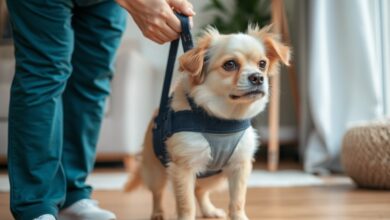Maltipoo Separation Anxiety – Causes and Solutions
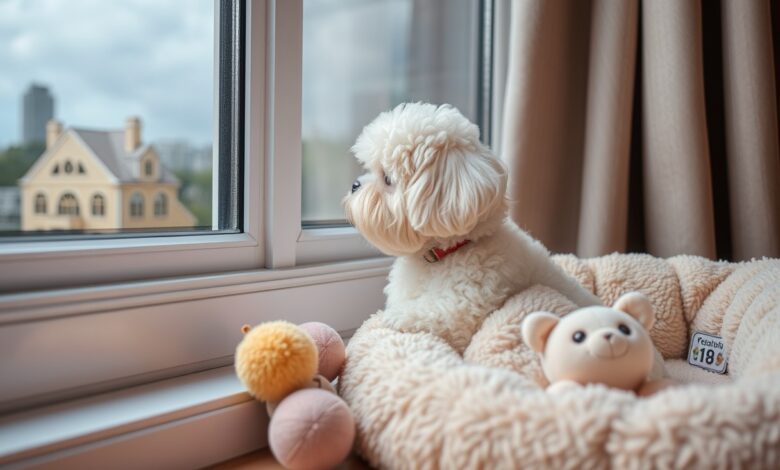
Many Maltipoo owners find themselves grappling with the challenges of separation anxiety in their furry companions. This emotional turmoil can lead to destructive behavior and increased stress for both you and your pup. Understanding the causes of your Maltipoo’s anxiety is imperative for addressing the issue effectively. In this blog post, we’ll explore how you can help your beloved pet feel more secure and relaxed when you’re away, ensuring a happier, healthier life for both of you.
Key Takeaways:
- Understanding Causes: Maltipoos may develop separation anxiety due to their strong attachment to their owners, changes in their environment, or traumatic experiences.
- Preventive Measures: Early socialization and crate training can help minimize the risk of anxiety development in Maltipoos.
- Effective Solutions: Providing consistent routines, interactive toys, and gradual desensitization can significantly mitigate separation anxiety symptoms.
Understanding Maltipoo Separation Anxiety
While your Maltipoo is an affectionate and playful companion, they can also be prone to separation anxiety. This is a condition that arises when your furry friend feels distressed or fearful during your absence. Understanding the causes and manifestations of this anxiety is crucial for creating a harmonious environment for both you and your adorable pet.
What is Separation Anxiety?
Maltipoo separation anxiety refers to a dog’s intense distress when separated from their owner or a familiar environment. This emotional issue can arise from various factors, including a change in routine, past traumatic experiences, or a lack of socialization. Addressing this condition is vital for maintaining your Maltipoo’s well-being and happiness.
Signs Your Maltipoo is Anxious
On recognizing the signs of anxiety in your Maltipoo is imperative for addressing the issue effectively. You may notice behaviors such as excessive barking, destructive chewing, or even attempts to escape when left alone.
This destruction of furniture or belongings can indicate extreme stress levels. Other signs may include excessive whining, pacing, or refusal to eat. You should also watch for signs of exhaustion or fear, such as hiding or trembling. By identifying these behaviors early on, you can take steps to help your Maltipoo feel more secure and comfortable when you are away.
Causes of Separation Anxiety in Maltipoos
Clearly, several factors can contribute to separation anxiety in Maltipoos. These adorable little dogs are known for their strong attachment to their owners, and when they find themselves alone, they may become anxious and distressed. Understanding the causes of this behavior is necessary for helping your furry friend cope and feel more secure when you’re gone.
Early Life Experiences
An important factor influencing your Maltipoo’s separation anxiety is their early life experiences. If your pup did not receive adequate socialization and positive experiences during their formative months, they may struggle with anxiety when faced with being alone. Early exposure to various environments, people, and other pets can help them develop resilience and confidence.
Changes in Routine
Maltipoos are creatures of habit and can be greatly affected by changes in routine. When your daily schedule alters, such as a new job, moving to a different house, or changes in family dynamics, your Maltipoo may become confused and anxious. They thrive on stability and predictability, making it crucial for you to maintain a consistent routine to help alleviate their anxiety.
This adjustment period can be challenging for both you and your Maltipoo. If you suddenly change your work hours or bring a new family member into the home, your adorable pup might show signs of distress. It’s necessary to offer your Maltipoo extra attention and reassurance during these times to help ease their fears. Consider gradually introducing new changes and maintaining some elements of your routine to keep your furry friend feeling secure and loved.
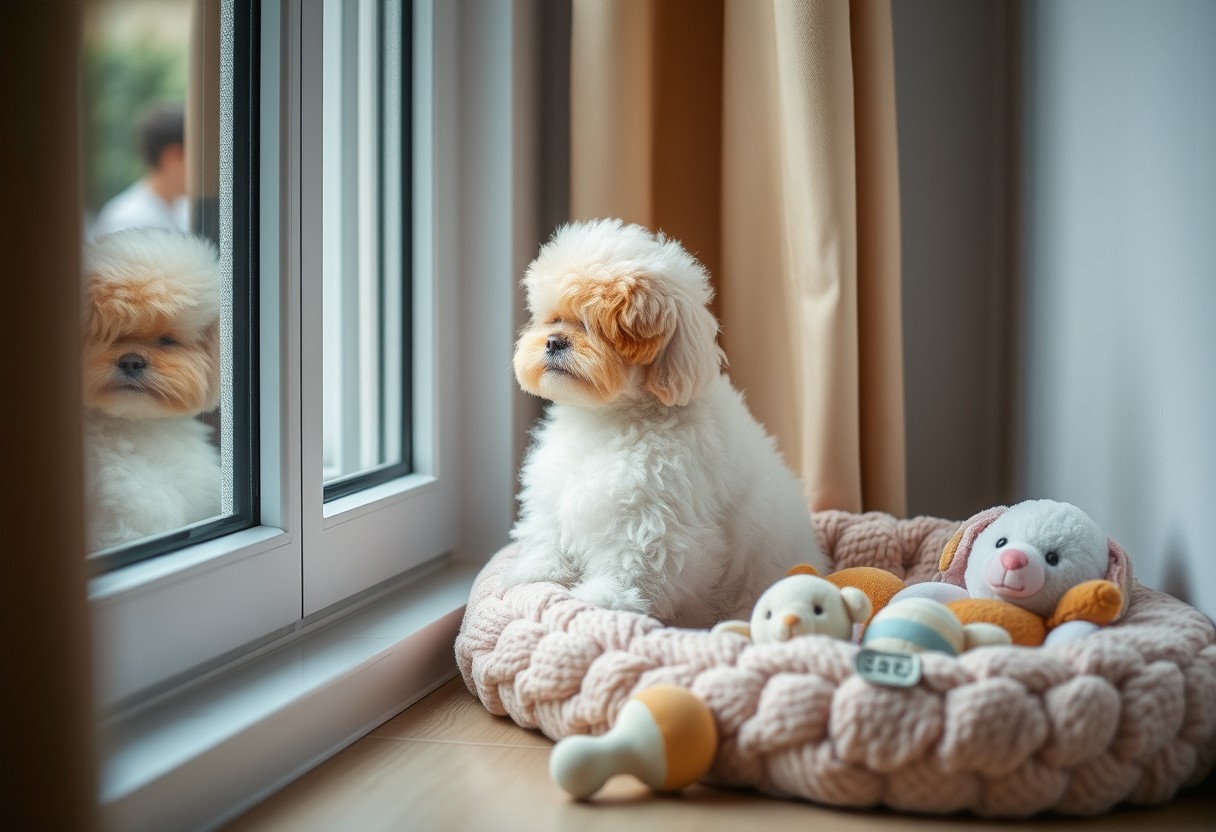
The Impact of Separation Anxiety
Keep in mind that your Maltipoo may experience profound emotional and physical challenges as a result of separation anxiety. This condition can lead to various behavioral issues and even affect their overall well-being, making it vital to recognize and address the signs early on. As you nurture your pup, understanding their emotional state will help forge a stronger bond and promote a happier home environment.
Effects on Behavior
For your Maltipoo, separation anxiety can manifest in a variety of undesirable behaviors, such as barking, chewing, or even attempting to escape when you leave. These actions stem from their overwhelming fear of being alone, and if left unaddressed, can potentially escalate into more severe issues over time. By recognizing these reactions, you can take steps to minimize their distress and help your furry friend feel more secure.
Effects on Health
On a physical level, separation anxiety can lead to increased stress, which may compromise your Maltipoo’s overall health. Common symptoms include digestive problems, fur loss, and weakened immune response, making them vulnerable to illness. Your pup’s mental state directly impacts their physical well-being, so prioritizing their emotional health is crucial.
Understanding that your Maltipoo’s separation anxiety can lead to significant health issues is vital. The stress caused by anxiety can trigger a release of stress hormones, negatively impacting their immune system, which makes them more susceptible to infections and diseases. Moreover, chronic stress can result in gastrointestinal issues, including diarrhea and loss of appetite, affecting their overall nutrition. Prioritizing their emotional well-being not only fosters a happier disposition but also contributes to their longevity and vitality. Taking steps to alleviate their anxiety can result in a healthier, more balanced life for your beloved companion.
Solutions for Managing Separation Anxiety
All Maltipoos can benefit from dedicated strategies to manage their separation anxiety, ensuring a happier, more relaxed pup. Incorporating a combination of training techniques and comforting strategies can significantly reduce their stress. By creating a consistent routine and gradually accustoming your Maltipoo to your absences, you’ll help them feel more secure. Recall, patience and understanding are key in reassuring your furry friend during these transitions.
Training Techniques
For effective management of separation anxiety, you can implement gradual desensitization training. Start by leaving your Maltipoo alone for short periods and gradually increase the time as they become more comfortable. Use positive reinforcement to reward your pup when they remain calm, helping to reinforce desired behaviors.
Comforting Strategies
To ease your Maltipoo’s anxiety, you can employ various comforting strategies that create a soothing environment. Providing a cozy space with their favorite toys or a piece of your clothing may help them feel secure while you’re away.
A safe, comforting space combined with consistent training can greatly reduce your Maltipoo’s separation anxiety. Consider using interactive toys or puzzle feeders to keep them engaged while you’re gone. You might also try leaving on some soft music or a recording of your voice to help them feel connected. It’s imperative to avoid overwhelming your Maltipoo with excessive fuss when you leave or return, as this can heighten their anxiety. Instead, maintain a calm demeanor to signal to your furry friend that everything is alright.
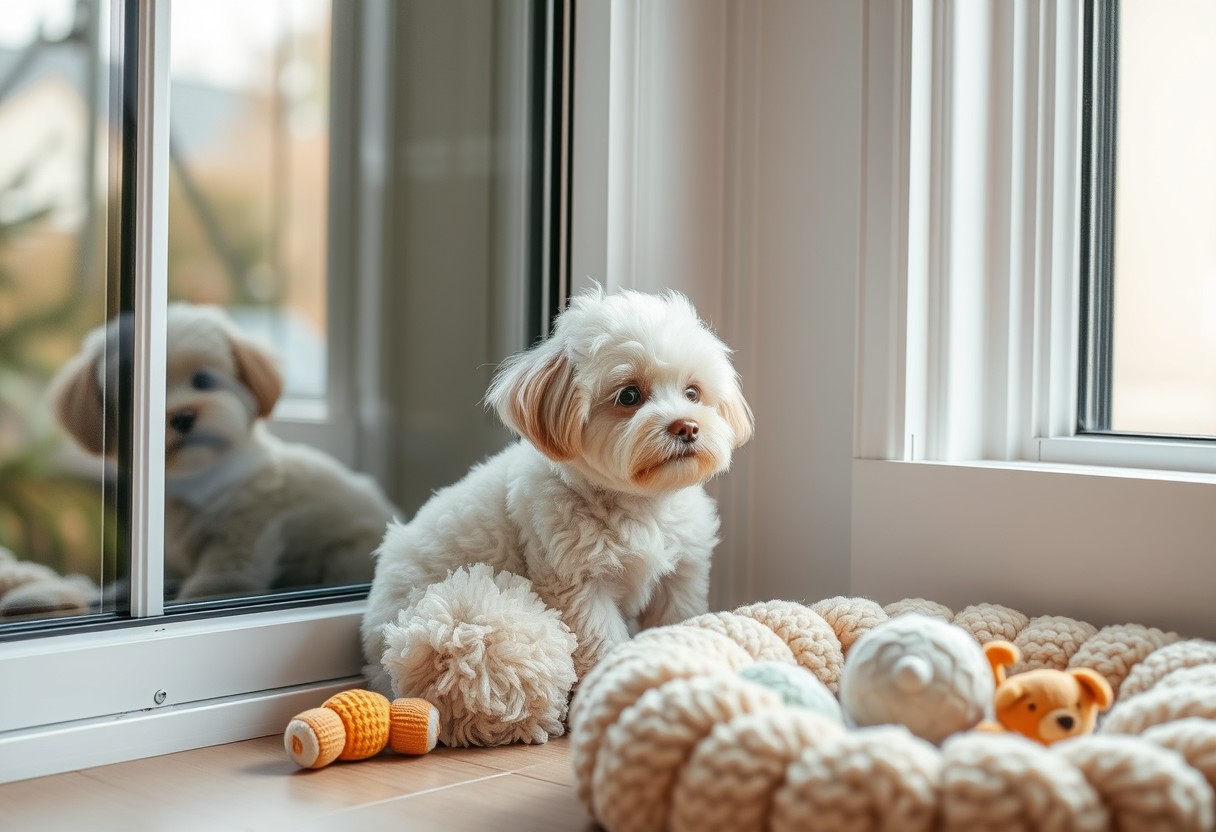
Seeking Professional Help
Many Maltipoo owners find that professional guidance can be invaluable in addressing separation anxiety. If your efforts to calm your pup aren’t yielding results, don’t hesitate to seek help. Dog trainers and veterinarians can provide tailored strategies and insight to help your furry friend overcome their anxiety, ensuring a happier, healthier relationship between you and your Maltipoo.
When to Consult a Vet
When your Maltipoo exhibits severe signs of anxiety, such as destructive behavior or excessive barking, it’s time to consult a vet. A veterinarian can rule out any underlying medical conditions that may contribute to these behaviors and discuss appropriate treatment options, including medication if necessary.
Finding a Dog Trainer
An experienced dog trainer can be a game-changer for your Maltipoo’s anxiety. They will offer personalized training techniques and strategies tailored to your dog’s specific needs, making the process much easier for both of you.
Seeking a qualified dog trainer is important in addressing your Maltipoo’s separation anxiety effectively. Look for trainers who have a strong background in positive reinforcement techniques, as these methods foster trust and build a strong bond between you and your pet. Ensure the trainer has experience with small breeds like Maltipoos, as this tailored approach will make a huge difference. Ask for references and read reviews to find someone who resonates with your values and training philosophy. Bear in mind, a well-trained dog is not only happier but also a joy to be around!
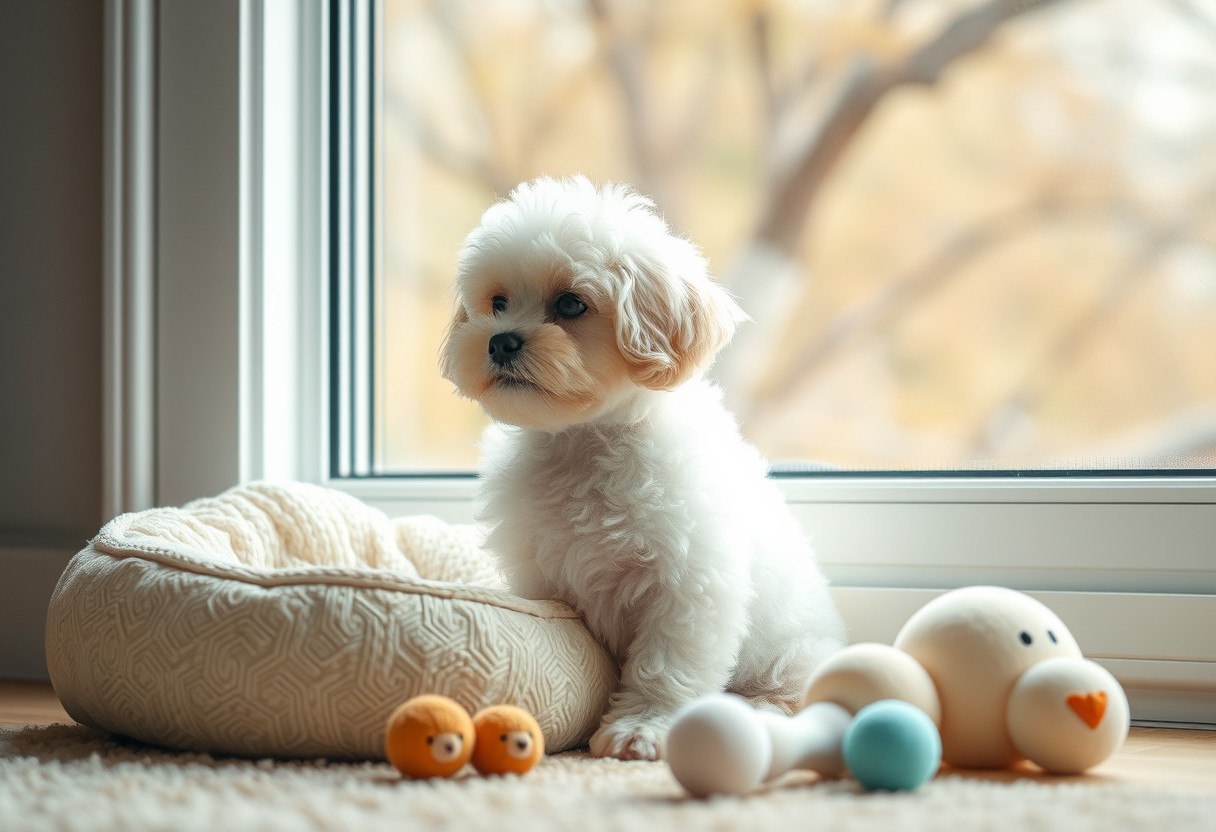
Prevention Tips for Future Anxiety
Despite the challenges of managing your Maltipoo’s anxiety, there are effective ways to prevent future episodes. Implementing these tips can foster a calmer environment for your furry friend:
- Establish a consistent routine for feeding and walks.
- Gradually increase alone time to help your Maltipoo become comfortable with being independent.
- Engage in regular exercise to reduce excess energy.
- Provide mental stimulation through toys and training.
Knowing these strategies can help you prevent future anxiety in your Maltipoo.
Building Independence
An vital part of preventing separation anxiety is helping your Maltipoo build independence. Start by gradually leaving them alone for short periods, then progressively increase the duration. You can also encourage independent play by providing engaging toys and puzzles. By fostering their ability to be alone, you’ll help create a confident pet.
Socialization Techniques
Anxiety can often stem from insufficient social experiences. Ensure your Maltipoo gets ample opportunity to interact with other pets and people. This exposure teaches them how to cope with various situations, promoting confidence.
It’s vital to introduce your Maltipoo to new environments, sounds, and people in a calm, controlled manner. Start with short encounters with friendly, well-mannered dogs and gradually expose them to larger groups. This positive exposure reduces fear and builds trust. Additionally, consider enrolling your Maltipoo in a puppy kindergarten or training classes, where they can socialize in a safe environment while learning new skills. Prioritize these experiences, as they can largely contribute to a well-rounded, confident dog.
To wrap up
Ultimately, understanding the causes of your Maltipoo’s separation anxiety is the first step toward finding effective solutions. By observing their behavior and implementing strategies like gradual desensitization, you can help ease their stress during your absences. Recall, your patience and commitment play a crucial role in supporting your furry friend. For more insights, check out this video on How We Eased Our Maltipoo’s Separation Anxiety So He…. With time and care, you’ll help your Maltipoo feel more secure and happy when you’re away.
Maltipoo Separation Anxiety – Causes and Solutions
Q: What are the common causes of separation anxiety in Maltipoos?
A: Maltipoos, being a mix of Maltese and Poodle, are known for their affectionate and social nature. Common causes of separation anxiety in Maltipoos include:
1. Lack of Socialization: If Maltipoos are not properly socialized during their early developmental stages, they may struggle with separation from their owners.
2. Change in Routine: Sudden changes, such as moving to a new home, a change in family structure, or alterations in daily routine, can trigger anxiety.
3. Previous Trauma: Maltipoos that have experienced abandonment or negative experiences before being adopted may be more susceptible to separation anxiety.
4. Too Much Attachment: Over-dependence on their owners or being overly pampered can lead to strong attachment, making it difficult for them to cope when left alone.
Q: What are the signs of separation anxiety in Maltipoos?
A: Signs of separation anxiety in Maltipoos can vary but generally include:
1. Excessive Barking or Howling: Maltipoos may vocalize excessively when left alone, which can lead to complaints from neighbors.
2. Destructive Behavior: Chewing furniture, scratching doors, or tearing up items in the home can indicate anxiety when left alone.
3. Inappropriate Elimination: Maltipoos may urinate or defecate inside the house, even if they are house-trained, due to stress and anxiety.
4. Pacing or Restlessness: Continuous pacing or signs of agitation when their owners prepare to leave can be a warning sign of anxiety.
5. Clinginess: They may exhibit clingy behavior, following their owners from room to room, and becoming anxious when they notice their owners preparing to leave.
Q: What are some effective solutions for managing Maltipoo separation anxiety?
A: To help manage separation anxiety in Maltipoos, consider the following solutions:
1. Gradual Desensitization: Begin by leaving your Maltipoo alone for short periods of time and gradually increase the duration. This can help them get used to your absence.
2. Create a Safe Space: Designate a cozy area for your Maltipoo with their favorite toys and a comfortable bed. This space can provide a sense of security when you leave.
3. Mental Stimulation: Engage your Maltipoo with puzzle toys, treat-dispensing toys, or interactive games before leaving to keep their mind occupied.
4. Adopt a Consistent Routine: Maintaining a consistent schedule for feeding, walks, and playtime can help alleviate anxiety by providing predictability.
5. Seek Professional Help: Consider consulting a veterinarian or a certified dog trainer for tailored advice, training techniques, or even the possibility of medication if the anxiety is severe.



